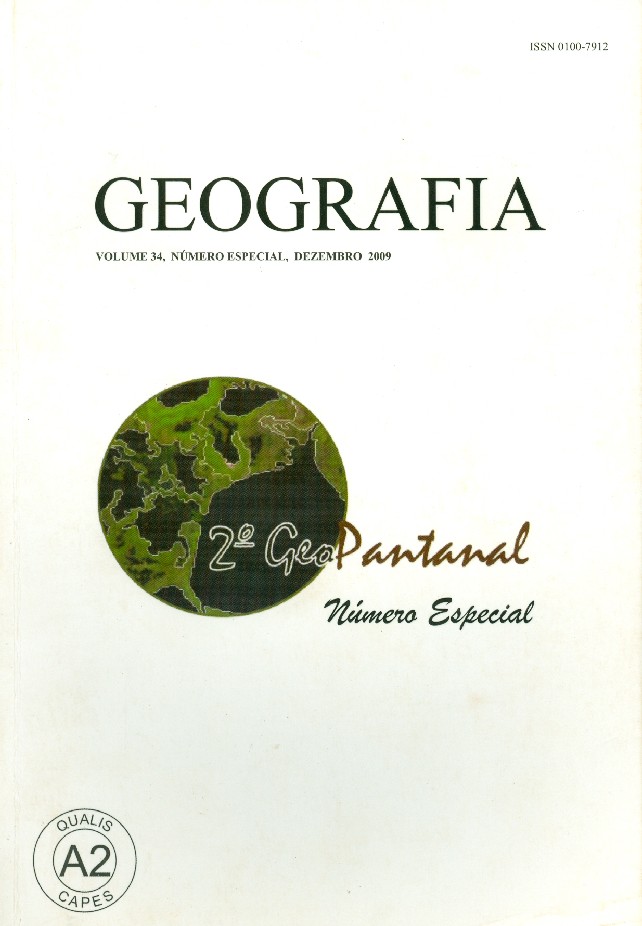FOCOS DE QUEIMADAS NAS UNIDADES DE CONSERVAÇÃO E TERRAS INDÍGENAS DO PANTANAL, 2000-2008
Abstract
Este estudo quantificou a ocorrência de focos de queima de vegetação detectados por satélites em duas Unidades de Conservação (UCF) Federais, seis Estaduais (UCE) e sete Terras Indígenas (TI) do bioma Pantanal no período 2000 a 2008. Considerando as imagens dos satélites disponíveis, 15 áreas de proteção apresentaram focos. Limitando as detecções à série referencial dos satélites NOAA-12 e NOAA-15, apenas uma UCE, de superfície mínima, não teve registros de focos. Como a maioria dos focos concentrou-se nos meses de seca, quando não ocorrem raios, deduz-se que o fogo eventual foi de origem antrópica. O ano de 2005 foi o mais seco do período, com ~100 mm de precipitação abaixo da normal climatológica para a região; e nele, o trimestre naturalmente seco de julho-agosto-setembro (JAS) concentrou o maior número focos nas áreas estudadas, 2637. Nos anos de 2003, 2006 e 2008, com precipitação acima da média, foram observadas as menores quantidades de focos. Em 2003, o ano mais úmido com ~100 mm acima da normal em JAS verificou-se apenas 10 focos. Estes resultados indicam que as áreas de proteção no Pantanal podem ser significativamente afetadas pelo fogo de origem antrópica, particularmente nos anos de estiagem pronunciada. Palavras-chave: Fogo. Unidades de conservação. Terras indígenas. Pantanal. Satélites. Fires in Conservation Units and Indigenous Territories at Pantanal, 2000-2008 This study quantified the occurrence of vegetation fires detected by satellites in two federal and six state conservation units (respectively FC and SC) and seven Indigenous territories (IT) in the Brazilian Pantanal biome for the period 2000-2008. Considering all images from the available satellites, fire pixels occurred in all of these 15 protection areas. When limited to the reference series using data from the NOAA-12 and NOAA-15 satellites, only one SC showed no fires. Since the majority of the fires concentrated in the dry months, and therefore when no lightning occurs, one concludes that the fires had an anthropogenic origin. The year of 2005 was the driest in the period, with ~100 mm of precipitation below the climatic normal in the region, and its naturally dry trimester of July-August-September (JAS) concentrated the largest amount of fire pixels, 2637. The years of 2003, 2006 and 2008, with precipitation above the average, had the lowest amounts of fires, and 2003, the wettest, with about 100 mm above the normal on JAS, had just 10 fire pixels. The results indicate that the protected areas in the Pantanal can be significantly affected by fires of anthropogenic origin, particularly in the years of pronounced drought. Key words: Fire. Conservation units. Indigenous territories. Pantanal. Satellites.Downloads
Published
Issue
Section
License
The authors maintain the copyright and grant GEOGRAFIA the right of first publication, with the articles simultaneously licensed under the Creative Commons BY 4.0 License, which allows sharing and adapting the articles for any purpose, as long as appropriate credits and provisions of image rights, privacy or moral rights. Other legal attributions can be accessed at: https://creativecommons.org/licenses/by/4.0/legalcode.en.
Geography, Rio Claro, SP, Brazil - eISSN 1983-8700 is licensed under the Creative Commons BY 4.0 License.





